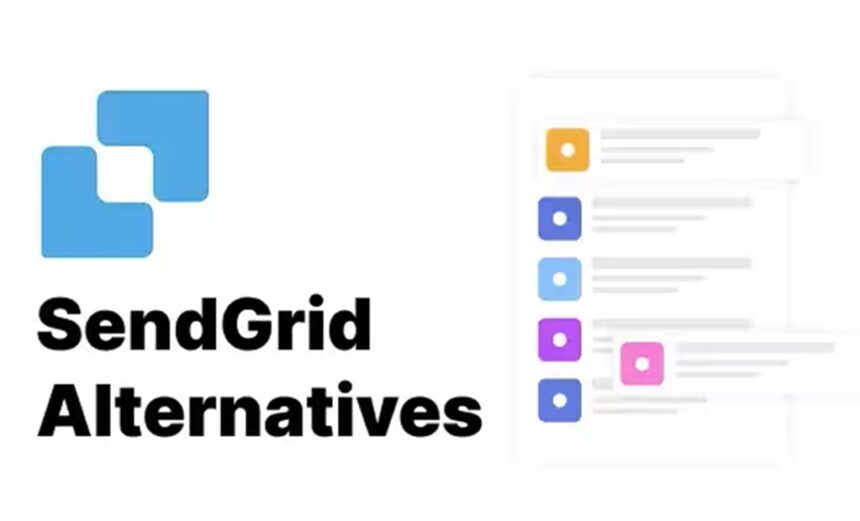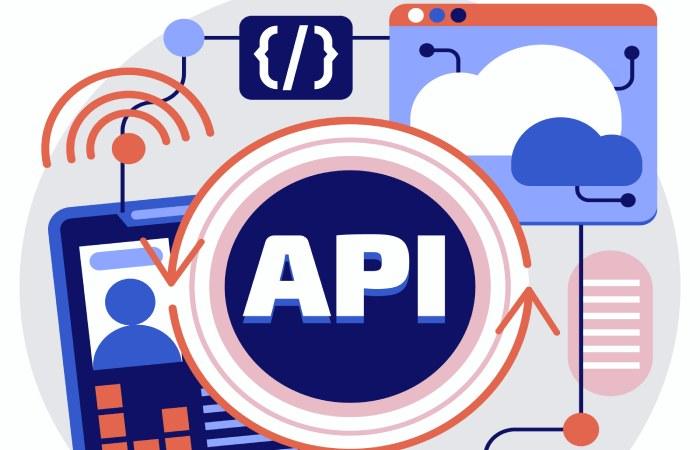Email continues to be a crucial component of online communication. Whether it’s for sending transactional notifications, resetting passwords, conducting marketing efforts, or engaging users, having a dependable email delivery service is essential.
SendGrid is among the most recognized options available; however, it does have its drawbacks, especially regarding customer support response times, API constraints, and its pricing model for growing companies.
As developers prioritize control, transparency, and reliability, many are turning to SendGrid alternatives that align more closely with their tech stack, business goals, and performance expectations.
Why Developers Are Seeking SendGrid Alternatives
Delayed Support Response Times
Individuals using basic subscription tiers frequently encounter extended wait periods when requesting assistance. This can result in significant setbacks when trying to resolve urgent deliverability or technical challenges.
Restricted Access to Deliverability Insights
Crucial insights related to deliverability are frequently available only through add-ons or higher-tier subscriptions. Consequently, users find it difficult to effectively track and enhance their email performance.
Complicated Pricing Structure as Email Volume Increases
As the volume of emails sent rises, the pricing model tends to become more convoluted and unpredictable. This complexity can complicate budgeting and financial management for organizations.
Inconsistent API Behaviour and Insufficient Documentation
Developers have experienced varying behaviour in the API across different endpoints. Additionally, the documentation is often lacking, which can create confusion during the integration process.
Issues with IP Pool Management Affecting Deliverability
Ineffectively managed shared IP pools can negatively impact sender reputation and decrease deliverability rates. Users have limited options to address this issue without access to dedicated IP addresses.
These challenges have created opportunities for ESPs that focus on enhancing the developer experience, providing comprehensive documentation, offering strong APIs, and delivering outstanding customer support.
Key Criteria for Comparing Email APIs
When looking for alternatives to SendGrid, developers typically take into account several key features:
- API Efficiency: This includes factors such as speed, reliability, RESTful design, and support for software development kits (SDKs).
- Deliverability Rates: This involves assessing inbox placement success, spam mitigation strategies, and management of domains/IPs.
- Customer Support: Key aspects include availability, response time, and technical knowledge.
- Integration Simplicity: Developers prefer solutions with comprehensive SDK documentation, webhook capabilities, and compatibility with various frameworks.
- Cost Structure: Options should be clear, scalable, and offer flexibility in terms of volume pricing.
- Analytics and Reporting Tools: Features like real-time monitoring, dashboards, bounce tracking, and engagement statistics are crucial.
Now, let’s examine some of the most reputable competitors to SendGrid that developers trust.
DuoCircle
Overview:
DuoCircle is an email security and delivery service hosted in the cloud, focusing on features like email forwarding, SMTP relay, protection against phishing attacks, and various security services. Its primary goal is to safeguard business communications while ensuring dependable email delivery.
API Features:
- Provides RESTful APIs for seamless integration of SMTP relay and forwarding functionalities.
- Supports DNS configurations such as SPF, DKIM, and DMARC.
- Developer documentation is limited when compared to more widely used email service providers.
- Not specifically tailored for transactional emails like SendGrid.
Customer Support:
- Offers prompt support via email and ticketing systems.
- Premium and enterprise customers have access to phone support.
- Emphasizes assistance for domain administrators and IT professionals.
- The support team is well-versed in security-related setups.
Pricing Model:
- Features a clear and tiered pricing structure.
- Includes pay-as-you-go plans for email forwarding, filtering, and spam defence.
Best Suited For:
- Businesses and IT departments are in need of email security solutions, spam filtering, or SMTP relay services.
- Organizations that require advanced filtering along with email forwarding capabilities.
2. Postmark
Summary:
ActiveCampaign’s Postmark specializes in dependable transactional email delivery rather than mass marketing, making it a preferred choice for developers who prioritize rapid delivery and consistent inbox placement.
API Capabilities:
- Incredibly fast email delivery, usually completed in less than 10 seconds.
- RESTful API featuring JSON compatibility.
- Comprehensive documentation for easy implementation.
- Available libraries for major programming languages such as Ruby, Python, Node.js, PHP, and more.
Customer Support:
- Outstanding technical support from a dedicated team.
- Quick response times, generally within a few hours — even for users on free trials.
- Highly regarded for its developer-centric approach.
Pricing Structure:
- Based on usage without any feature restrictions.
- Pricing begins at $15 per month for sending 10,000 emails.
Ideal For:
- Sending transactional emails that require both speed and dependability.
- Applications where promptness is essential, such as one-time passwords (OTPs) and alerts.
3. Mailgun
Summary:
Mailgun, a service provided by Sinch, is an advanced platform tailored for developers. It offers a robust email infrastructure that facilitates the sending, receiving, and monitoring of emails.
API Capabilities:
- Features a highly efficient RESTful API equipped with webhook functionality.
- Handles over 100 billion emails each month while ensuring excellent delivery rates.
- Provides outstanding real-time analytics and logging capabilities.
Customer Support:
- Round-the-clock assistance is available for higher-tier plans.
- Comprehensive documentation and active community forums are provided.
- Support tiers come with Service Level Agreements (SLAs).
Pricing Structure:
- Flexible pay-as-you-go and subscription options are available.
- The free tier allows for sending up to 5,000 emails per month for the first 30 days.
- The basic subscription starts at $35 per month.
Ideal For:
Applications that require a high volume of emails, robust analytical tools, and customizable domain/IP management.
4. Amazon SES (Simple Email Service)
Summary:
Amazon SES offers a budget-friendly, scalable, and adaptable email service within the AWS ecosystem, making it ideal for teams already utilizing AWS infrastructure.
API Functionality:
- Designed for high scalability and robust security.
- Seamlessly integrates with various AWS services such as Lambda, SNS, and CloudWatch.
- While it may pose challenges for novices, it proves to be highly effective for experienced users.
Support Options:
- The level of support varies based on the chosen AWS support plan (Basic, Developer, Business, Enterprise).
- Although the documentation can be complex, there is a substantial community and AWS developer network for assistance.
Pricing Structure:
- It is among the most affordable choices, costing $0.10 for every 1,000 emails sent.
- Users can access a free tier that allows for 62,000 emails per month when sent from EC2 instances.
Ideal For:
- Budget-conscious developers require extensive control and are already leveraging AWS services.
5. Mailjet
Summary:
Mailjet, which is now integrated with Sinch (similar to Mailgun), provides a versatile and cooperative email platform that focuses heavily on both marketing and transactional emails.
API Functionality:
- Features a RESTful API with comprehensive SDK support.
- Offers a user-friendly drag-and-drop email creator that allows for dynamic templates through the API.
- Includes real-time tracking of events.
Customer Support:
- Premium plans provide email and live chat assistance.
- Enterprise accounts receive dedicated support.
Pricing Structure:
- Offers a free tier allowing up to 200 emails per day.
- Paid plans begin at $15 per month for 15,000 emails.
Ideal For:
- Teams that require collaborative tools in addition to robust email APIs.
6. SMTP2GO
Summary:
SMTP2GO prioritizes strong email deliverability, complemented by a user-friendly dashboard and seamless API integration.
API Capabilities:
- Dependable SMTP and API solutions.
- RESTful API featuring straightforward error management.
- Consistent uptime supported by servers located worldwide.
Assistance:
- Around-the-clock live support is included in all plans, setting them apart.
- Customized onboarding experiences for enterprise clients.
Pricing Structure:
- Complimentary service for up to 1,000 emails each month.
- Plans begin at $10/month for sending 10,000 emails.
Ideal For:
- Developers who seek rapid support and a straightforward approach to reliable email delivery.
7. Brevo (formerly Sendinblue)
Summary:
Brevo provides a comprehensive suite of marketing automation and transactional email services. It is favoured by small to medium-sized businesses and independent developers due to its user-friendly interface and competitive pricing.
API Functionality:
- Reliable API with software development kits available for popular programming languages.
- Enables both transactional email handling and marketing campaigns through the API.
Assistance:
- Paid plans include priority customer support.
- Documentation for email features is useful, although it lacks the technical depth found in competitors like Mailgun or Postmark.
Pricing Structure:
- The free tier allows for sending 300 emails per day.
- Basic plans start at $25 per month.
Ideal For:
- Developers and marketers seeking a comprehensive solution for email and marketing needs.
How to Choose the Right SendGrid Alternative
In the end, selecting the best email service hinges on your project’s specific needs. Here’s a brief guide to help you decide:
- If you require swift and dependable transactional emails, opt for Postmark.
- For analytics, adaptable APIs, and scalability, consider Mailgun or SparkPost.
- If you’re using AWS and need to keep costs low, Amazon SES is a great option.
- If having support access is important even with basic plans, look into SMTP2GO.
- For a combination of marketing automation and transactional emails, go with Brevo or Mailjet.
While SendGrid is a trustworthy choice, numerous contemporary email services have emerged with functionalities tailored to the unique requirements of developers.
These alternatives boast quicker delivery times, consistent support, and sophisticated analytics, all backed by robust APIs and infrastructure. Investing time in evaluating and experimenting with these solutions can enhance the development process and turn email into a valuable strategic asset.
Related Tech News:
Thailand Becoming the Digital Nomad Capital of the World
















